These Sonoma County residents are facing the challenges of long-term changes to our climate — and are finding reasons to hope.
The Forester
Dan Falk, Cazadero
Branches, brush, stumps and vines: Timber and agricultural operations produce a lot of organic waste. And it doesn’t exactly fit in the green bin. A common solution is to send unwanted byproducts up in smoke through large burn piles.
But for Dan Falk and his team at Richardson Ranch—a family-owned lumber, cattle, and wine grape operation near Cazadero—the status quo needed updating. That so-called waste needed to be seen as a usable resource, its valuable carbon returned to the earth rather than lost to the atmosphere, where it would contribute to climate change.
Since 2019, Falk has been a leader in demonstrating a better way to recycle wood waste with the Tigercat 6050 Carbonator.
This $750,000 piece of machinery converts wood into biochar, a process that reduces emissions and allows carbon to be returned to the soil, where it can improve plant health. Falk’s ranch currently has the only Carbonator in California, but Falk leases out the machine for special projects and says that he hopes the idea will catch on widely soon, particularly with all the fire cleanup happening up and down the state each year.
— Nate Seltenrich
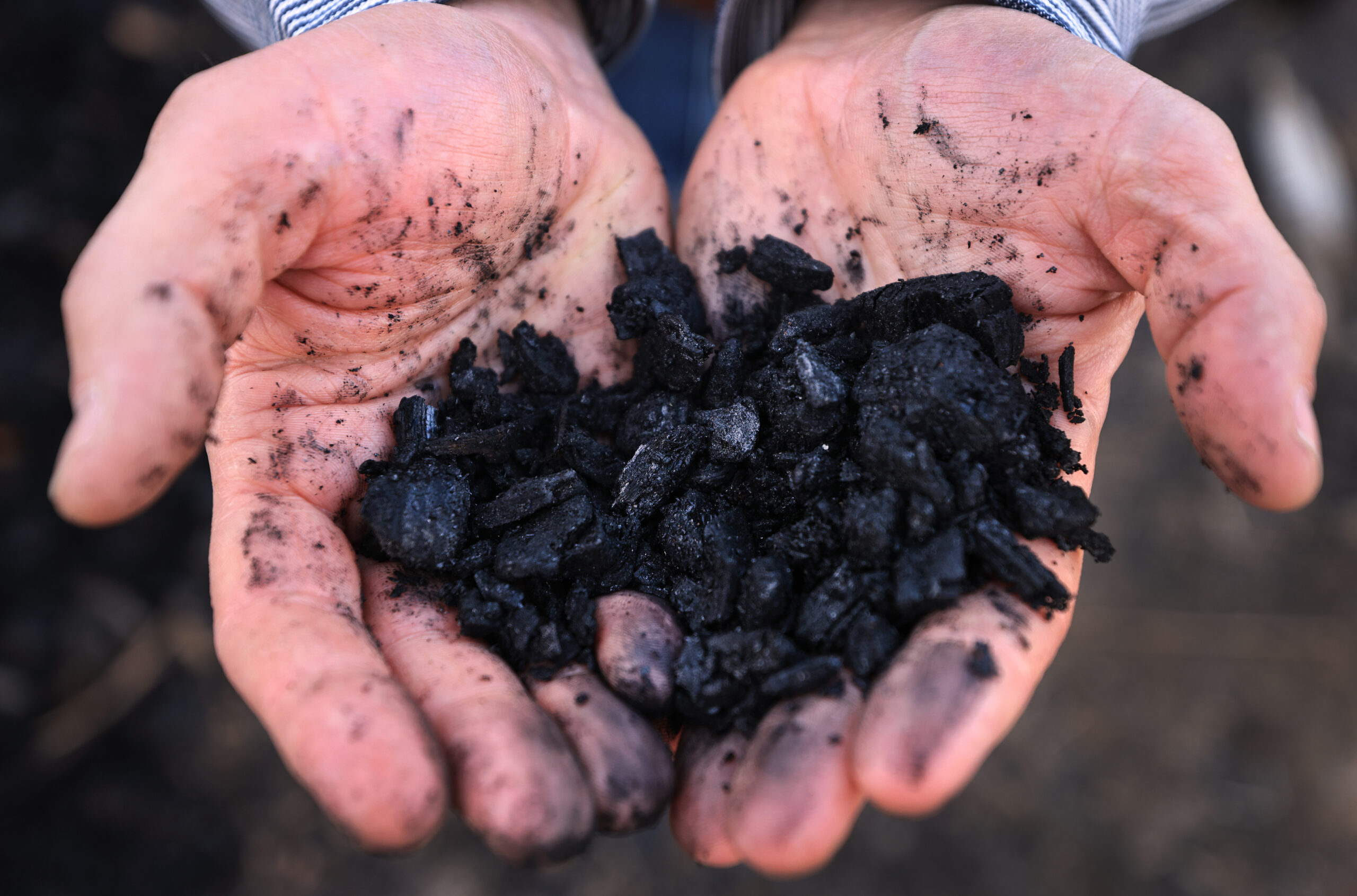
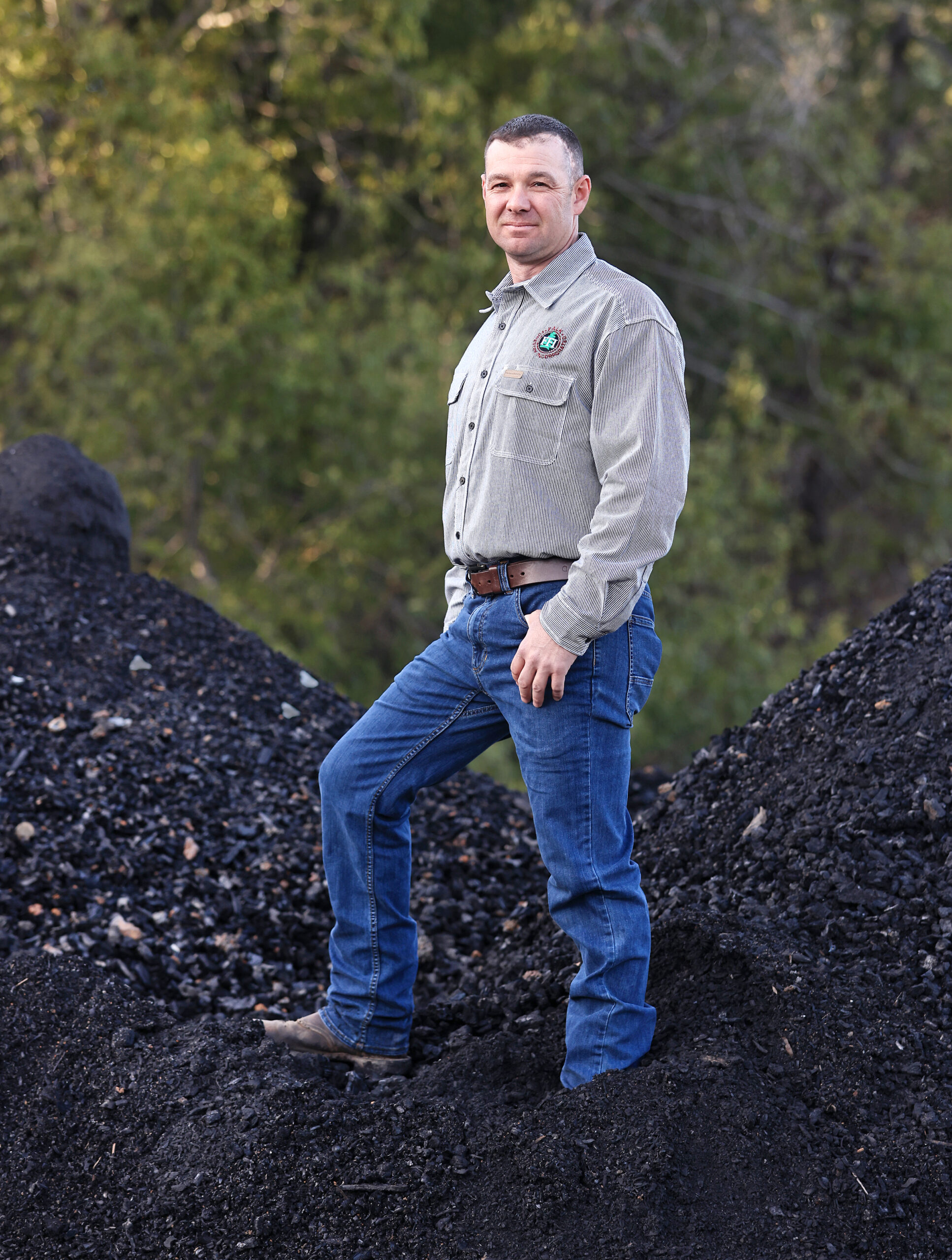
Generational stewardship: I’m fifth-generation. The land has been in management about 150 years. And if you don’t change with the changing times, you get kind of left behind in the old ways. With the biochar machine, the Carbonator, we’re looking at different ways to grow cleaner, healthier timber trees, and also grasses for our cattle, so they’re healthier, too.
Circular thinking: Using the resources we have, we make a big circle, from the forest to the range and essentially back to the forest again, sustaining the landscape and our ranch by taking what we have and then putting that back in. This helps the land be more productive and supports a healthier climate, by storing carbon instead of releasing it.
Rehabbing soils: The more water that is retained in your rangeland soil, the longer your grass or forage stays green. When we put the carbon back into the forest, trees can stay healthier with more water in these stressed times. It helps from the ground down to rehabilitate soils, to maintain and retain microorganisms, to create a healthier soil profile.
Biochar and fire recovery: Where these machines would really thrive is with fire cleanup. Instead of the typical chipping, grinding, and hauling to the cogeneration plant, you turn around and put all this woody material through the Carbonator and turn it into biochar. You’re producing a significantly lower volume of material, and you’re storing the carbon, which you can put back into the forest. You’re not actually burning up all these resources.
The Inspiration
Kailea Frederick, Petaluma
Last year, Petaluma’s Climate Action Commission embarked on a climate “moonshot” goal of pushing the city to become carbon neutral by 2030. “It’s a huge task, but this is the reality that we need to be facing,” says Kailea Frederick, who has been part of the citizen-led advisory group since its inception. “We have a small window to make these changes. And it’s created a ripple effect in other cities, pushing them towards similar commitments. That’s something I’m really proud of.”
Frederick’s climate work spans geographies, identities, and generations: Raised on Maui and nudged towards activism by her grandmother, she is now raising a family in Petaluma, and works as a campaigner with the NDN Collective, a national Indigenous-led organization focused on climate justice.
Developing climate solutions through a Native lens has been core to her work, explains Frederick, who is of Tahltan, Kaska, and Black American ancestry.
“Indigenous people have brilliant ideas and innovations that need to be invested in if we’re going to get out of this current crisis,” she says.
— Kristin Moe
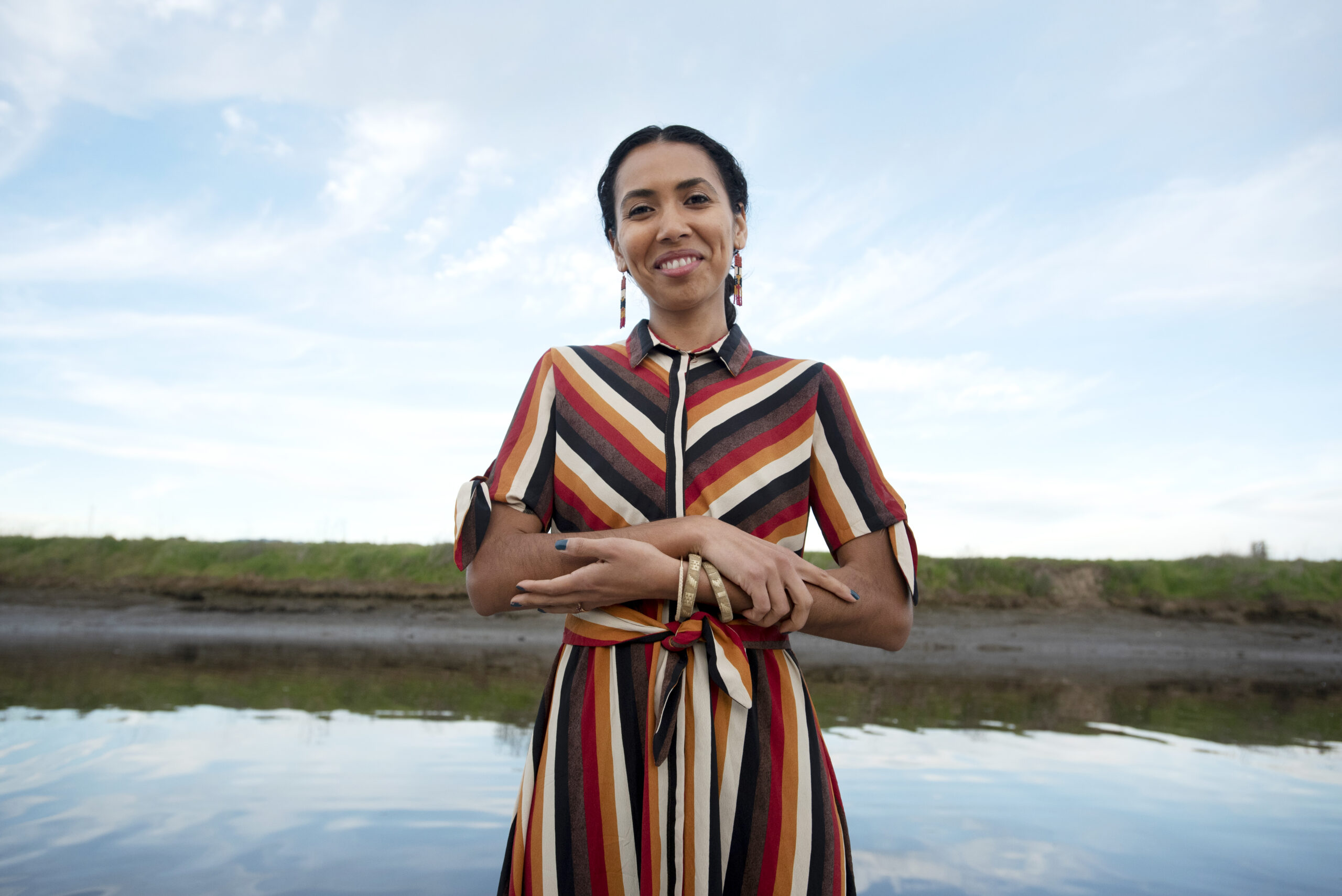
Local resilience: One of the things that keeps me up at night is thinking about how unprepared individuals are for high heat, or fire, or smoke. That really scares me. Disaster preparedness is, in some ways, the conversation of our times. It’s one of the reasons I coauthored the book, “Compassion in Crisis: Learning to Live in an Age of Disaster.” It’s something we could all become more comfortable speaking with each other about.
Kid wisdom: My son is three and a half, and when I’m working, he’ll sometimes ask, “What do you do?” I say, “I’m trying to help the earth feel good, and help people feel good on the earth.” Coming up with these simplified explanations for him has been really grounding.
A quiet power: Because I wasn’t trained in policy and advocacy, I doubted my ability to do this work. But this is something that people can learn. Local commissions hold a lot of power, but it’s a quiet power that most people aren’t aware of. People always ask me the question, “What can I do?” Right now, the answer I have is: become political! This is truly an ”all-handson-deck” moment. There is a place for everyone.
The Educator
Tessa Hill, Bodega Bay
As a young professor, ocean climate scientist Tessa Hill found herself having to footnote her own lectures to account for rapid changes in the marine environment to which she was introducing her students. Then it struck her that she’d been granted a rare gift: the opportunity to help young people cut through the noise about the earth’s future.
“I had a realization that probably the most important part of my job was my time spent in that room with 200 undergraduates, because I had a chance to help those students start to think critically about what they were reading in the newspaper or seeing on TV,” Hill says.
“They were going to go into the world and start their professional lives. They were also going to be voters, and I wanted them to know about the ocean, and I wanted them to vote knowing about the ocean.”
At the UC Davis-Bodega Marine Laboratory in Bodega Bay, Hill researches ocean acidification and its impacts on shellfish and coral, as well as opportunities for carbon storage in seagrasses and other plant life. And as a mother and community leader in Sebastopol, Hill is passionate about public engagement, science education, and holding elected officials accountable for science-based decision-making. “We’re going to spend a lot of time both addressing climate change and also adapting to climate change,” she says, “and the longer the time we take to address it, the more adaptation we have in store.”
— Mary Callahan
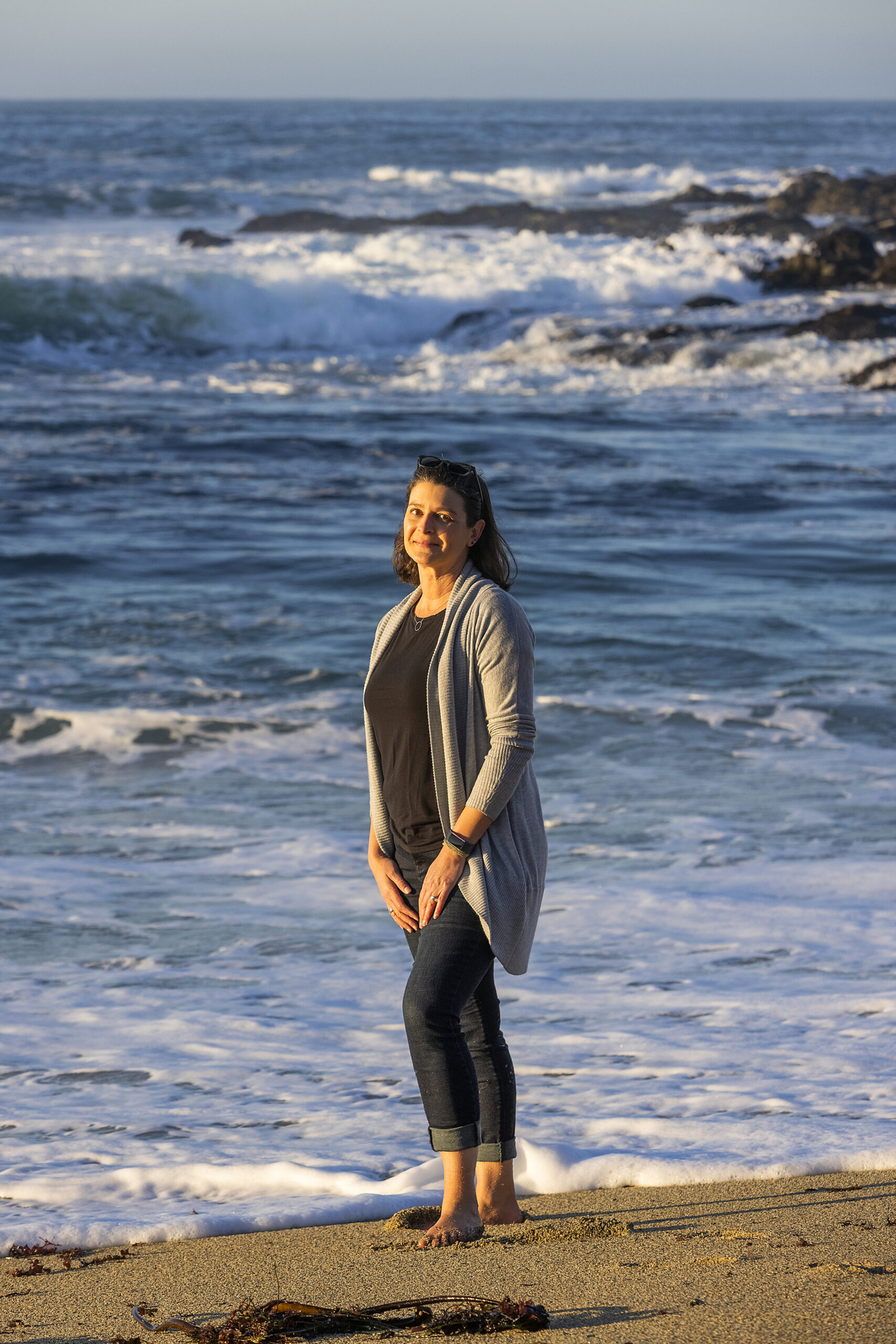
On useful discoveries: One of the things I love about the science we do is that it’s right at the interface. I get to ask really interesting scientific questions about fundamental things that we should know about marine animals and the ocean. But the thing is, I know the answers can then be handed off to the people who can use them.
The web of history: The issue of climate change doesn’t stand alone. It is completely intertwined with all the other issues we are facing in our country. It’s intertwined with our very long history of racism. It’s intertwined with our history of colonialism and capitalism.
A balance to strike: We have grief, loss, and anxiety about the planet that we’re living on, but we also have the knowledge and [the] actions to take. Those two things, they go together. And acknowledging that both exist is really important. Whatever we can do to cultivate hope and optimism and also tend to the grief and the anxiety and the loss, we have to do those things, because we are not at a place where we can just stop work on these problems.
The Visionary
Steve Heckeroth, Santa Rosa
Steve Heckeroth hopes to transform farming with electric tractors. It’s a goal he’s had since the early 1990s, when the longtime sustainability expert found himself building electric sports cars from scratch, outfitting replica Porsche Spyder frames with 1,200 pounds of lead-acid batteries.
Heckeroth now serves as Chief Innovation Officer for Solectrac, a Santa Rosa-based company he founded in 2012.
He makes a strong case for tractors and other farm vehicles going electric, not only for sustainability, but for improved functionality—the weight of the batteries carried on board improves traction and balances heavy farm implements. Solectrac currently operates out of a 10,000 squarefoot facility near the airport, where employees perform final assembly and testing of the company’s three tractor models. Last June, Solectrac was acquired by electric-vehicle behemoth Ideanomics, a move that allowed the company to scale production. The company is about to take over a new, even larger space, which the CIO thinks it will probably outgrow within just a few years.
Heckeroth says despite all this progress, he still relishes a good, old-fashioned tractor showdown. “There are guys that are all about ‘noise plus smoke equals power,’” he says. “They’re on their diesel tractor in the tractor pull with my electric, and they’re just getting pulled away like they can’t believe it. They’re immediately converts; they’re like born again.”
— Nate Seltenrich
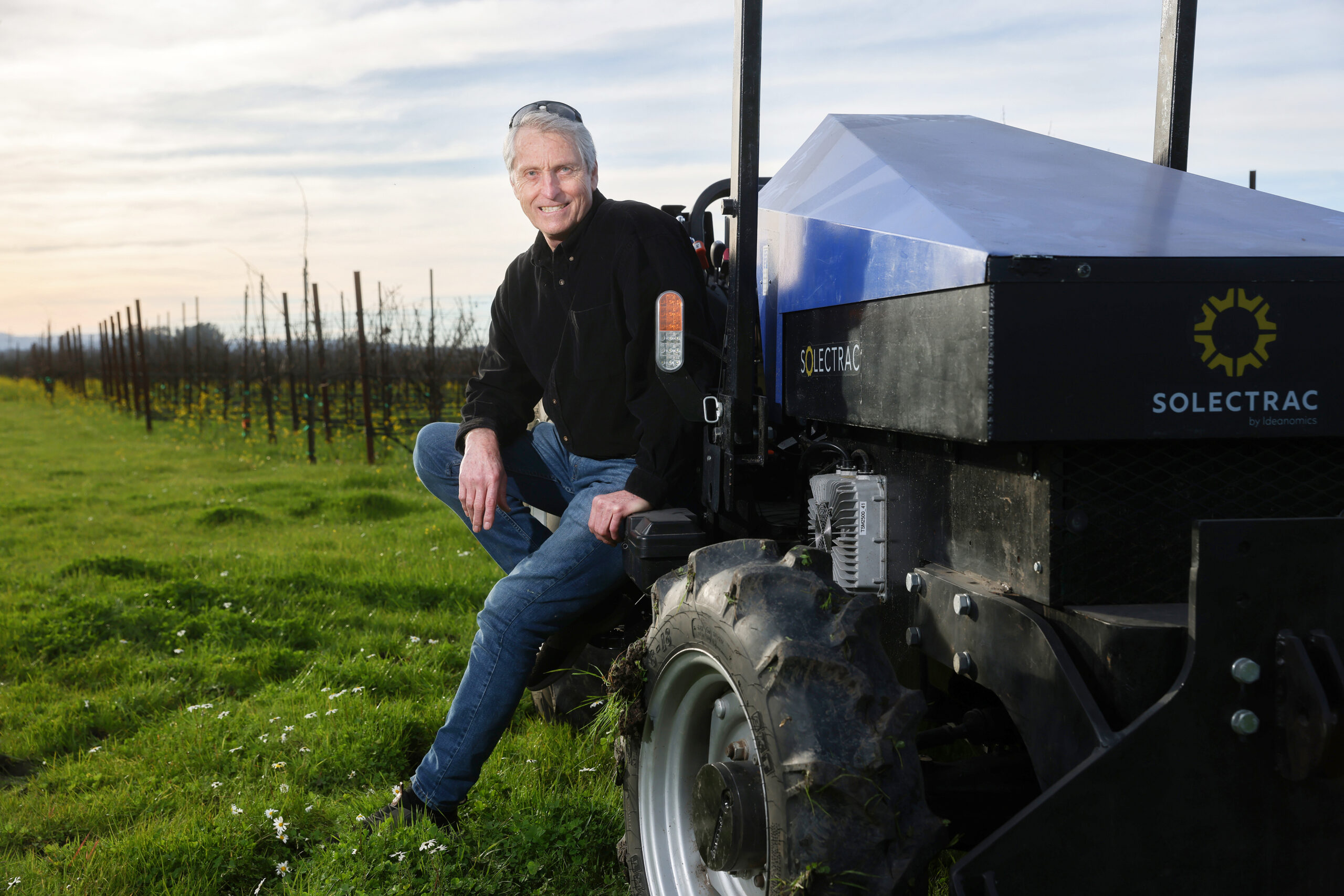
The a-ha moment: I was at the [Mendocino] County Fair [in 1992], and I saw this big cement block on the back of a tractor to balance the weight of the forklift that they had fitted on the front. And I thought, ‘Gosh, that’s a pretty heavy weight. That should be batteries.’ And that’s what made me switch my whole focus from cars to tractors.
Selling points: I think climate change has a lot to do with people’s perception, because it’s pretty hard to deny that the climate is changing at this point. This has helped push electric cars into the forefront of people’s minds. Plus, there are so many advantages to electric: low maintenance, quiet, the instant power. Especially for tractors — I mean, tractors are all about torque.
The market: There are 600 million farms in the world, and only 25 million tractors. So the market is really here for an inexpensive small tractor. I want to fill that market so that subsistence farms can be about 10 to 20 times as productive. If we can get tractors on farms that are using hand tools or oxen, then we can literally feed the world.
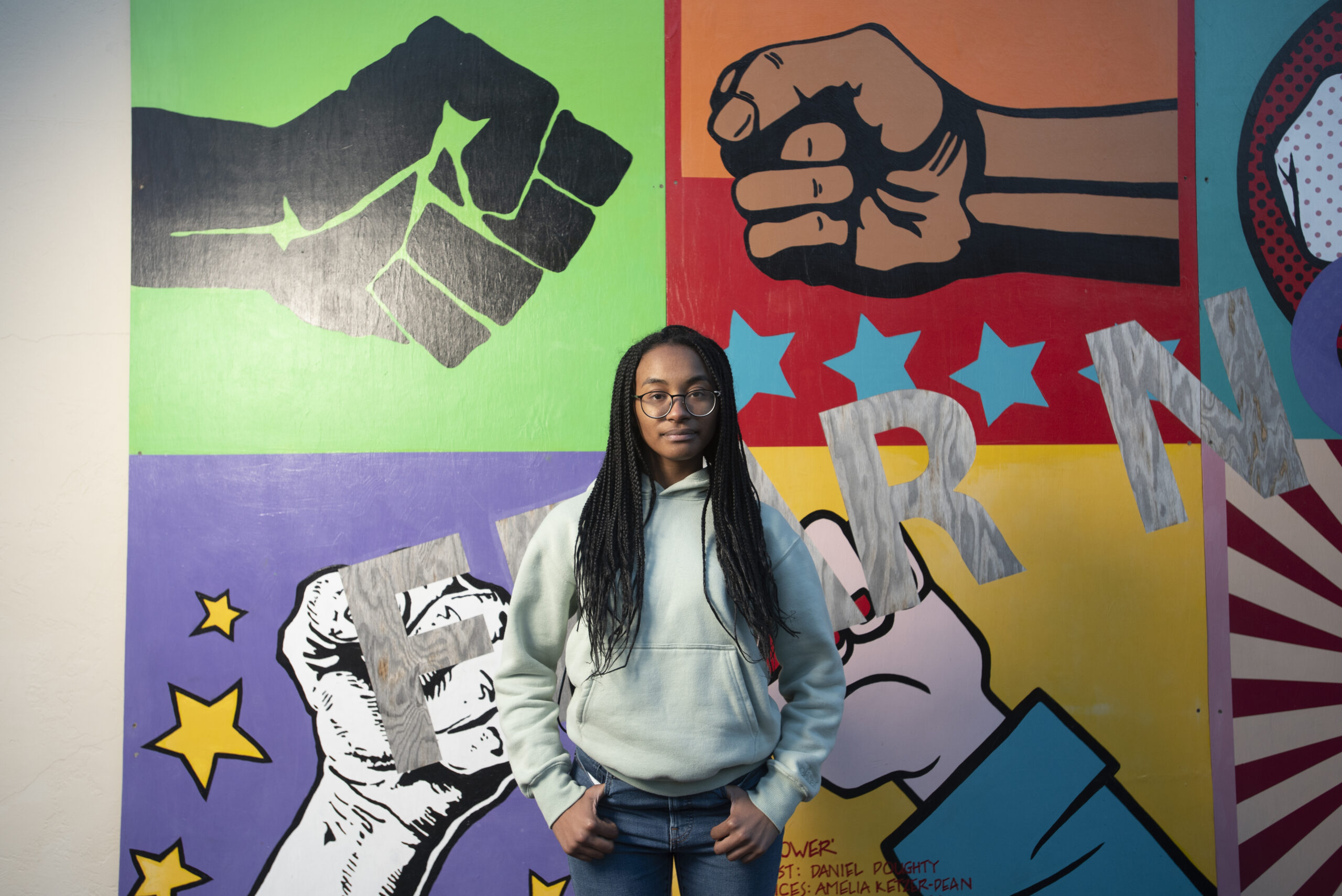
The Youth Leader
Janina Turner, Santa Rosa
Janina Turner is not naive about what’s happening in our world. She is more aware of the challenges confronting us than she might like. She also has faith that the worst can be averted if informed, committed people act with the necessary urgency. “What it really takes is for people to understand that a better future is possible,” Turner says.
“We get a lot of climate messaging that is really doom and gloom, but a part of it is building a better world,” reflected in just housing, smarter transportation, and healthier food, she says. “I think it’s just painting the picture that we don’t have to be living in a world fueled by a climate crisis.”
But Turner believes it’s an “emergency,” with little time left to make a difference, so she is working the problem on two fronts. In her day job as energy program coordinator at the nonprofit Climate Center, the Sonoma State University grad is focused on efforts to promote policies that reduce reliance on fossil fuels, specifically through increased electrification.
Turner also works as a local leader with the national, youth-directed Sunrise Movement, which advocates for climate justice—the only way, she believes, to ensure that climate solutions don’t leave some people out. Says Turner: “People power translates to political power, and that’s truly how the movement works.”
— Mary Callahan
A public face: On a national level, whether it’s a protest or a hunger strike, we’re not just targeting politicians to take action, but we’re also being so public because we want the public to know these are causes that are so important, that affect you and everyone around you.
Strength in numbers: Being a part of the Sunrise Movement and, like, any environmental movement, and really fighting for something and being with likeminded people, that’s a great motivator. I’ve really bonded over being part of this community.
Fight for the future: Even though we know that climate change is real and happening and is obviously impacting our future, we still want to fight for a livable future. It’s our right to thrive and to live here. It’s really for my future. It’s for the future generations under me. And it’s hard work. It really does require a lot of positivity, even in the face of a living disaster.
The Planner
Nina Hapner, The North Coast
When Nina Hapner considers the needs of a changing landscape, she looks forward—and she looks back. As director of environmental planning for the Kashia Band of Pomo Indians of the Stewarts Point Rancheria, Hapner hopes to restore balance to hundreds of acres of tribal land along the North Coast.
She’s also seeking opportunities to blend generational knowledge with modern land management approaches, promoting both the health of the land in which the Kashia people have long held a stake, and the availability of plants and foods important to cultural traditions.
In 2015, the tribe acquired the 678-acre Kashia Coastal Reserve at the northern edge of Salt Point State Park, a move that ensures permanent access to coastal waters, where elders can pass on traditional harvest customs. Hapner, who is of Tsalagi heritage, works closely with Kashia members to develop goals for the land. Her team is working with local partners to monitor changes in marine species important to the tribe, and to collect observations from elders about past ocean and marine life conditions. “Resilience for the Kashia means reciprocity – using resources in such a way that there’s still some the next time you need it,” she says.
— Mary Callahan
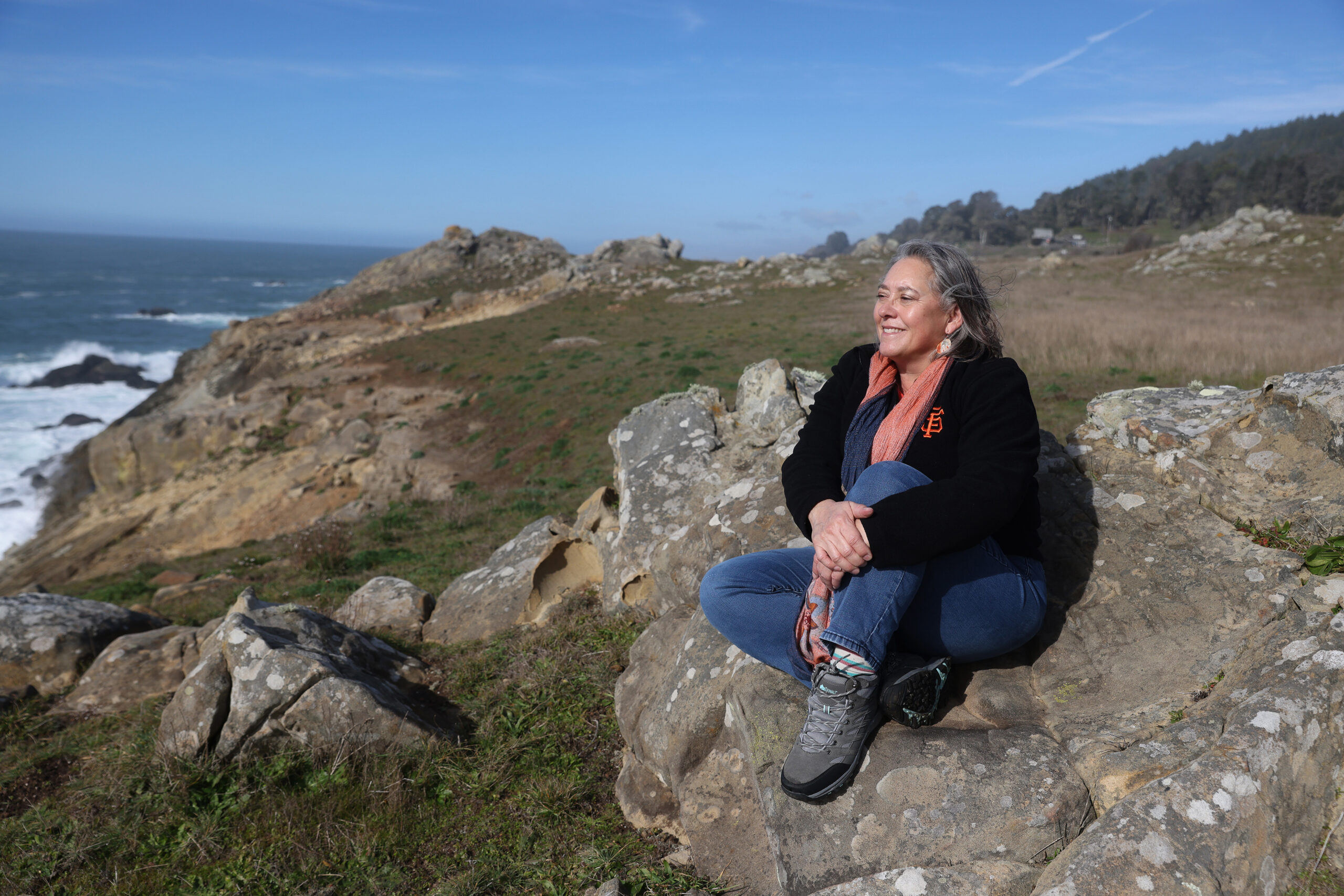
Respecting tribal knowledge: Sometimes people say, ‘Oh yeah, I talked to this sixth-generation salmon fisherman, and this is what they told me.’ And when a tribal member tells them the same thing, it’s disregarded. So working with tribal members, we’re trying to get their stories, with the work that we do and the monitoring that we’re putting together.
The coastal reserve: The land has been managed for cattle grazing, sheep grazing, and timber harvesting. That doesn’t fit with the tribe wanting to collect traditional foods, medicinal plants—things that they know about and have been unable to look at in unfettered ways.
A few curveballs: We talk about resilience, and that’s really what we need, but how do we know if we’re resilient? Nobody knows. Every year is a curve. Already this year the amount of snow between the East Coast and the Sierras—holy moly!
The Storyteller
Maya Khosla, Rohnert Park
As a child, Maya Khosla remembers waking up to her mother’s early morning ritual of listening to the birds. This is how Khosla learned that there was something important about listening to wildlife. “Little did I know, I’d grow up to do a lot of that—both in poetry and in filmmaking, as well as as a biologist. All these pieces come together in that single memory of my mom.”
Khosla has spent years doing biological fieldwork across Sonoma and the North Bay. In 2014, she was asked to study forests that had burned in wildfires. What she observed—and, she says, what hundreds of other studies support—is that, rather than being dead zones, post-fire forests are places where life not only returns, but thrives. “You might say that life returns in waves: insects come in, the birds come for the insects, then hawks and predator birds come for the smaller birds. Then, maybe some chicks fall from the nest onto the ground, and suddenly you have bobcats and mountain lions and bears. All these incredible layers of the wild coming back and claiming it for themselves.”
There’s also new plant growth: leaves, wildflowers, mushrooms. Even the blackened trees may begin to sprout bright-green shoots. “It’s a new aesthetic that we’re not used to,” she says. “To see all of these charcoal-colored trees looking so stark — and they’re also full of life!”
In 2018, Khosla, who has published several volumes of poetry, used her platform as Sonoma County’s Poet Laureate to bring together communities around the topic of healing from fire. She organized a series of community events at burn sites in the early stages of regeneration from the 2017 fires. Youth and adults were invited to meet, write and read their work, surrounded by the post-fire landscape in bloom. Similarly, her films “Firewise: The Scientists Speak” and “Rejuvenation Poem” explore California’s fire ecology — and the policies that shape our relationship to it.
— Kristin Moe
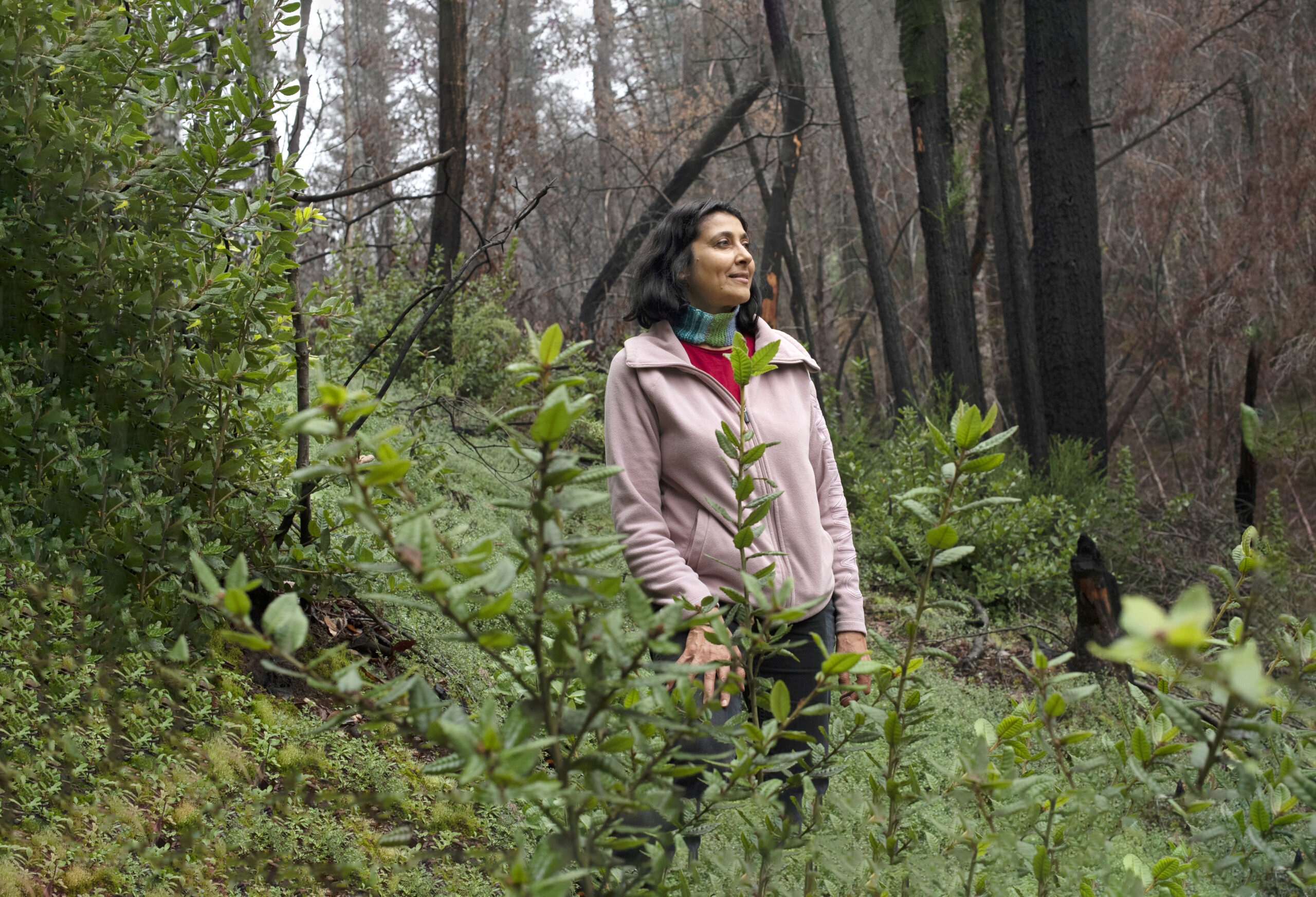
Let it be: There’s a belief right now that we have to “thin” forests — that if we remove 50% or more of the trees, make it neat and organized, that it’ll behave in a fire. And over and over, the data says that’s not going to happen; the fire races through just the same.
Similarly, if we believe that a forest is “finished” after a fire, that’s an excuse to go in and log it. But if you leave it alone, that carbon remains in place, and you’ve got a beautiful accumulation of biomass. The forest is going to come back. Let it take care of itself, because it will.
The aesthetic of the comeback: One of the things that I’m hearing a lot is that it’s ‘too late’— we can try to tame climate change, but we’re losing everything. But I hope people can think about the aesthetic of the comeback: even when something looks far gone, there is hope that it’ll make the comeback it needs to make, if we don’t drag the machinery of extraction through it and try to tame it in some way.
Weaving poetry and biology: Both, to me, are about intimate connections: the look in the eyes of the great gray owl as she swoops down to get her meal; the sound of a mountain lion you’re tracking— but who is actually tracking you. These intimate moments bring you back into connection with something you maybe gave up hope for. You get centered in that moment of discovery. We are losing a lot. But the hope lies in these little intimate moments that bring you back, and that’s to me at the heart of poetry, and at the heart of biology. It’s where they come together.










